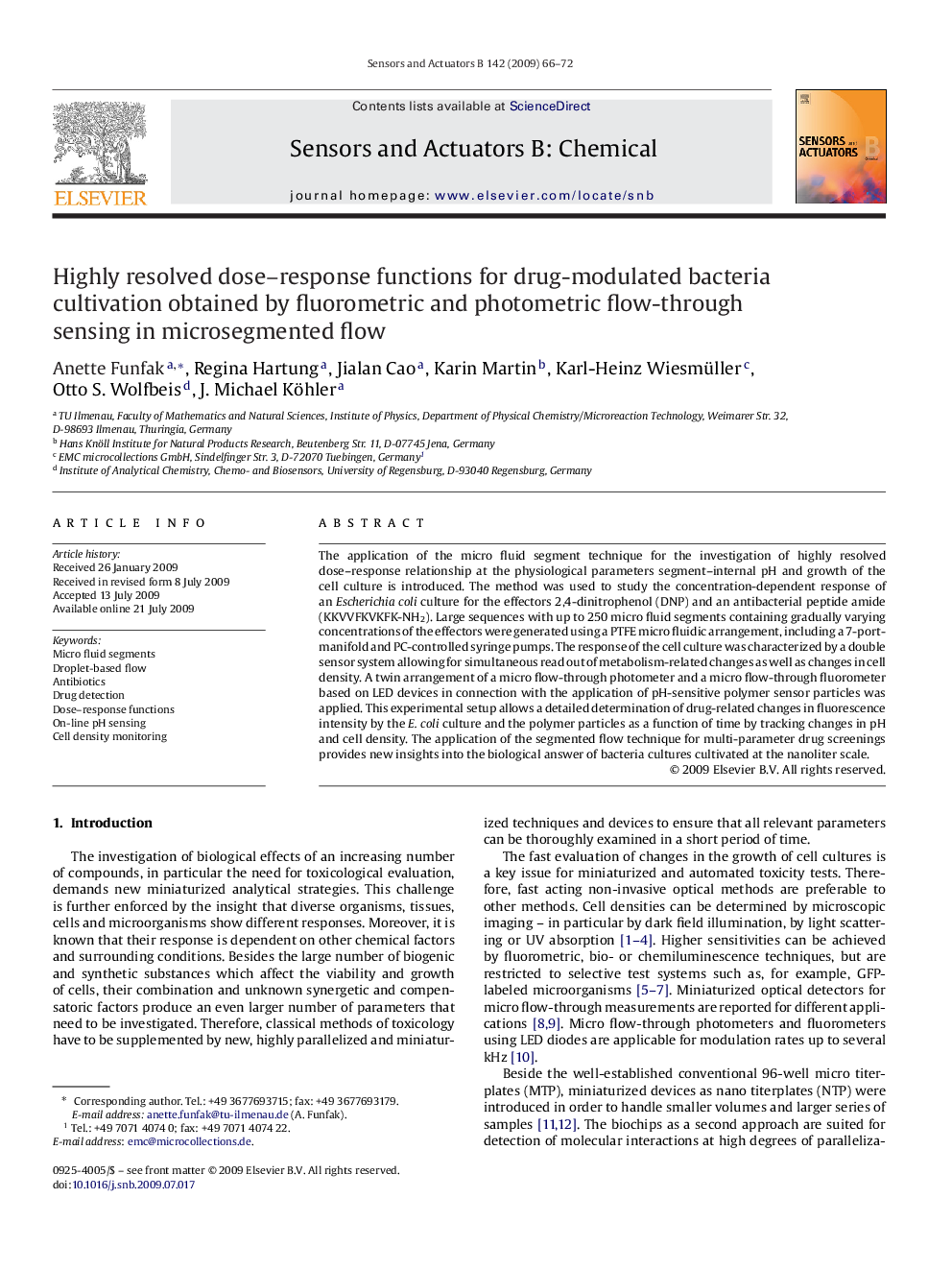| Article ID | Journal | Published Year | Pages | File Type |
|---|---|---|---|---|
| 743119 | Sensors and Actuators B: Chemical | 2009 | 7 Pages |
The application of the micro fluid segment technique for the investigation of highly resolved dose–response relationship at the physiological parameters segment–internal pH and growth of the cell culture is introduced. The method was used to study the concentration-dependent response of an Escherichia coli culture for the effectors 2,4-dinitrophenol (DNP) and an antibacterial peptide amide (KKVVFKVKFK-NH2). Large sequences with up to 250 micro fluid segments containing gradually varying concentrations of the effectors were generated using a PTFE micro fluidic arrangement, including a 7-port-manifold and PC-controlled syringe pumps. The response of the cell culture was characterized by a double sensor system allowing for simultaneous read out of metabolism-related changes as well as changes in cell density. A twin arrangement of a micro flow-through photometer and a micro flow-through fluorometer based on LED devices in connection with the application of pH-sensitive polymer sensor particles was applied. This experimental setup allows a detailed determination of drug-related changes in fluorescence intensity by the E. coli culture and the polymer particles as a function of time by tracking changes in pH and cell density. The application of the segmented flow technique for multi-parameter drug screenings provides new insights into the biological answer of bacteria cultures cultivated at the nanoliter scale.
